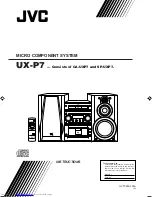
87
Configuration Examples
Introduction to TCP/IP
Introduction to TCP/IP
In a single LAN it is possible to use
various protocols for the transmis-
sion of data. The connection be-
tween a workstation computer and
the OpenCom 510 runs via the TCP/
IP protocol used on the Internet.
TCP/IP can be used together with
other protocols (e.g. NetBEUI, Apple-
Talk or IPX/SPX) on the same net-
work.
Every device participating in data
transmission using TCP/IP requires a
unique IP address. An IP address
consists of four groups of digits from
0 to 255, each separated by a full
stop. The supplementary protocols
DHCP and PPP automatically assign
IP addresses to devices. Class C net-
works normally use IP addresses in
which the first three numbers are
the same and the last number is
uniquely assigned to a specific de-
vice in the LAN. On the Internet,
unique addresses assigned by a spe-
cial organisation created for this pur-
pose are used. Within a LAN, you can
use addresses which are not unique
world-wide.
TCP/IP enables the establishment of
connections via one or more inter-
mediate stations. The decision
whether to connect directly or indi-
rectly to the partner device depends
on the network mask. The network
mask for a class C network is
255.255.255.0. If the IP address of
the partner device does not fit the
network mask, the connection is es-
tablished via the default gateway. If
a device knows several data routes
to different intermediate stations,
one speaks of a router.
The domain name system (DNS) re-
solves a plain text DNS name into an
IP address. The DNS is a hierarchi-
cally structured database, distrib-
uted worldwide. A DNS server can
supply information on the names
and IP addresses for which it is re-
sponsible. For all other information,
a DNS server contacts other DNS
servers. For the establishment of
every connection from the worksta-
tion, it is possible to give either an IP
address, or a name that a DNS server
resolves into an IP address.
Note:
For further explanations of
technical terms, refer to the Glossary
on the CD-ROM supplied.
Summary of Contents for OpenCom 510
Page 1: ...OpenCom510 Mounting and Commissioning User Guide ...
Page 160: ...158 Index Notes ...
Page 161: ...159 Index Notes ...
Page 162: ...160 Index Notes ...
Page 163: ......
















































